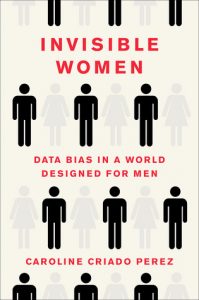 What with the snow hitting us right about now, it seems like a good time to talk about how snow removal can be sexist. Yup. Snow removal. Sexist.
What with the snow hitting us right about now, it seems like a good time to talk about how snow removal can be sexist. Yup. Snow removal. Sexist.
Edited: Here are the links to Canadian stats! Thank you Victoria!
- Mortality, List of Causes 2009: https://www150.statcan.gc.ca/n1/en/pub/84f0209x/2009000/t001-eng.pdf?st=djsju9M-
- Injuries in Canada: Insights from the Canadian Community Health Survey: https://www150.statcan.gc.ca/n1/pub/82-624-x/2011001/article/11506-eng.htm#a2
Northern Sweden has been collecting data on hospital admissions for injuries since 1985, and found in icy or slippery conditions, pedestrians were injured three times more often than motorists, “and account for half the hospital time of all traffic-related injuries”. Furthermore:
[T]he majority of these pedestrians are women. A study of pedestrian injuries in the Swedish city of Umeå found that 79% occurred during the winter months, and that women made up 69% of those who had been injured in single-person incidents… two-thirds of injured pedestrians had slipped and fallen on icy or snowy surfaces, and 48% had moderate to serious injuries, with fractures and dislocations being the most common. Women’s injuries also tended to be more severe. (Criado Perez, c.1: Can Snow-Clearing Be Sexist?, Invisible Women).
Alright, so women are more likely to be injured in icy or slippery conditions (enough to end up in a hospital for treatment), with more severe injuries than men. But why? As it turns out, men and women tend to use different modes of transport, along with very different travel patterns, which is true worldwide to varying degrees (based on the limited sex-disaggregated data we have on the topic): whereas men are more likely to drive and “dominate access to [a household’s car]” (ibid; by which I assume Criado Perez means in man-woman households), with simple travel patterns that consist of commuting to and from town, women tend to walk and take public transport and have more complicated travel patterns, namely trip-chaining: making several interconnected trips at once. This is part of a larger discussion about unpaid labour, which is discussed throughout Invisible Women, but women’s travel patterns tend to include a cornucopia of tasks, including: dropping children off before heading to work; taking aging parents to the doctor; grocery shopping on the way home.
Seeing the data and this information about gender differences in travel patterns, Sweden changed the order of snow plowing to target sidewalks before main roads (because really, it’s a lot easier for the car to drive over snow than for a person to walk (or push a stroller) through the same amount of snow on the sidewalk). Let’s break it down. Considering that pedestrian injuries due to icy and slippery conditions account for, as stated above, “half the hospital time of all traffic-related injuries”, that’s no paltry amount of staff time and effort being devoted to women’s injuries – and this doesn’t even take into account the time this army of injured women need to take off work (paid or unpaid labour) to heal (or even just to go to the hospital in the first place). The conservative estimated cost of these pedestrian injuries throughout one winter was 36 million Kronor (approximately £3.2 million), which “was about twice the cost of winter road maintenance. In Solna, near Stockholm, it was three times the cost, and some studies reveal it’s even higher” (ibid.). All this to say, even if you don’t care at all about gender equality or women getting injured disproportionately, or you think that well in that case more women should just drive to solve this issue**… taking women and their needs into account when policy-making makes sense. I know the conclusion of that sentence was pretty self-evident, and it should be a no-brainer, but clearly, if the decision was made in the first place to plow the roads before taking care of the sidewalks, it wasn’t. It isn’t. Taking women into account doesn’t come naturally, clearly. This is why Invisible Women is such a necessary read, especially now: so that taking women and their needs into consideration will become natural.
